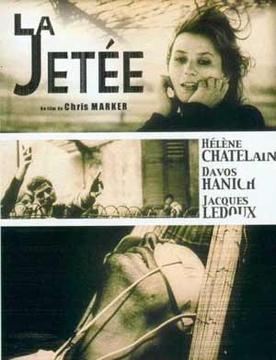
La Jetée is a 1962 French science fiction featurette directed by Chris Marker and associated with the Left Bank artistic movement. Constructed almost entirely from still photos, it tells the story of a post-nuclear war experiment in time travel. It is 28 minutes long and shot in black and white.

12 Monkeys is a 1995 American science fiction thriller film directed by Terry Gilliam from a screenplay by David Peoples and Janet Peoples, inspired by Chris Marker's 1962 short film La Jetée. It stars Bruce Willis, Madeleine Stowe, Brad Pitt, and Christopher Plummer. Set in a post-apocalyptic future devastated by disease, the film follows a convict who is sent back in time to gather information about the man-made virus that wiped out most of the human population on the planet.
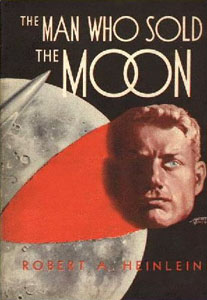
"The Man Who Sold the Moon" is a science fiction novella by American author Robert A. Heinlein, written in 1949 and published in 1950. A part of his Future History and prequel to "Requiem", it covers events around a fictional first Moon landing in 1978 and the schemes of Delos D. Harriman, a businessman who is determined to personally reach and control the Moon.

Apocalyptic and post-apocalyptic fiction is a subgenre of science fiction in which the Earth's civilization is collapsing or has collapsed. The apocalypse event may be climatic, such as runaway climate change; astronomical, such as an impact event; destructive, such as nuclear holocaust or resource depletion; medical, such as a pandemic, whether natural or human-caused; end time, such as the Last Judgment, Second Coming or Ragnarök; or any other scenario in which the outcome is apocalyptic, such as a zombie apocalypse, cybernetic revolt, technological singularity, dysgenics or alien invasion.

Benjamin Jacob "Ben" Grimm, also known as the Thing, is a superhero appearing in American comic books published by Marvel Comics. He is a founding member of the Fantastic Four. The Thing was created by writer-editor Stan Lee and artist Jack Kirby, and he first appeared in The Fantastic Four #1.
Arthur Bertram Chandler was an Anglo-Australian merchant marine officer, sailing the world in everything from tramp steamers to troop ships, but who later turned his hand to a second career as a prolific author of pulp science fiction. He also wrote under the pseudonyms of George Whitley, Andrew Dunstan and S.H.M. Many of his short stories draw on his extensive sailing background. In 1956, he emigrated to Australia and became an Australian citizen. By 1958 he was an officer on the Sydney-Hobart route. Chandler commanded various ships in the Australian and New Zealand merchant navies, including his service as the last master of the Australian aircraft carrier HMAS Melbourne; by law, the ship was required to have an officer on board while awaiting its towing to China to be broken up. Chandler wrote over 40 novels and 200 works of short fiction, winning the Australian Ditmar Awards for the short story "The Bitter Pill" and for three novels: False Fatherland, The Bitter Pill, and The Big Black Mark. One of Chandler's daughters, Jenny Chandler, married British horror fiction writer Ramsey Campbell. His other children were Penelope Anne Chandler and Christopher John Chandler.

Godzilla: The Series is an American-Japanese animated television series developed by Jeff Kline and Richard Raynis. The series originally aired on Fox Kids in the United States between September 12, 1998 and April 22, 2000, and is a sequel to Godzilla (1998). Malcolm Danare, Frank Welker, Kevin Dunn and Michael Lerner reprise their roles from the film.

Earth X is a 1999 comic book limited series published by American company Marvel Comics. Earth X was written by Jim Krueger with art by John Paul Leon. Based on Alex Ross' notes, the series features a dystopian version of the Marvel Universe.
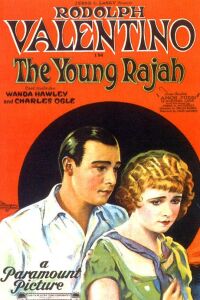
The Young Rajah is a 1922 silent film starring Rudolph Valentino. The film was based on the book Amos Judd by John Ames Mitchell.
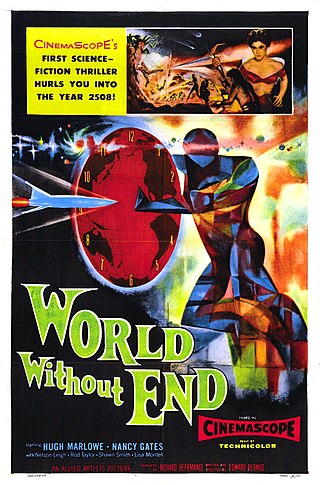
World Without End is a 1956 American science fiction film directed by Edward Bernds and starring Hugh Marlowe and Nancy Gates. It was made in CinemaScope and Technicolor by Allied Artists and produced by Richard Heermance.

Milcząca Gwiazda, literal English translation The Silent Star, is a 1960 East German/Polish color science fiction film based on the 1951 science fiction novel The Astronauts by Polish science fiction writer Stanisław Lem. It was directed by Kurt Maetzig, and stars Günther Simon, Julius Ongewe and Yoko Tani. The film was first released by Progress Film in East Germany, running 93 min. Variously dubbed and cut versions were also released in English under other titles: First Spaceship on Venus, Planet of the Dead, and Spaceship Venus Does Not Reply.

SunAge is real-time strategy video game developed by Austrian company Vertex4 and published by Lighthouse Interactive. It has received attention due to its use of 2D sprites and backgrounds.
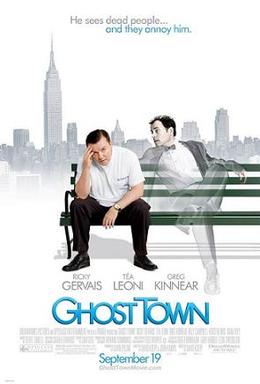
Ghost Town is a 2008 American fantasy comedy film directed by David Koepp, who also co-wrote the screenplay with John Kamps. It stars English comedian Ricky Gervais in his first leading feature-film role, as a dentist who can see and talk with ghosts, along with Téa Leoni as a young widow and Greg Kinnear as her recently deceased husband. Gavin Polone produced the film for Spyglass Entertainment and Pariah, and it was distributed by Paramount Pictures through the DreamWorks Pictures label.

Twilight is the sixth young adult novel in the Mediator series by Meg Cabot, published by HarperTeen in 2004. In the UK, it was published with the title Heaven Sent. It was the final novel in the series until the publication of Remembrance in 2016.

War of the Satellites is a 1958 independently made American black-and-white science fiction film drama, produced and directed by Roger Corman, and starring Richard Devon, Dick Miller and Susan Cabot. It was distributed in the U.S. and the U.K. by Allied Artists. In the U.S., it was released as a double feature with Attack of the 50 Foot Woman.
Space Probe Taurus is a 1965 low budget black-and-white science fiction/action/drama film from American International Pictures, written and directed by Leonard Katzman, and starring Francine York, James E. Brown, Baynes Barrow, and Russ Bender.

Erik Lehnsherr, also known as Magneto, is a character primarily portrayed by Ian McKellen and Michael Fassbender in 20th Century Fox's X-Men film series. Based on the Marvel Comics character of the same name, he has appeared in eight installments of the franchise. McKellen played Magneto in the original trilogy films X-Men (2000), X2 (2003) and X-Men: The Last Stand (2006), in addition to making a cameo in The Wolverine (2013); while Fassbender portrayed a younger version of the character in the prequel films X-Men: First Class (2011), X-Men: Apocalypse (2016) and Dark Phoenix (2019). Both actors' iterations appeared in different time periods in X-Men: Days of Future Past (2014).














